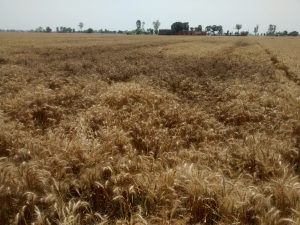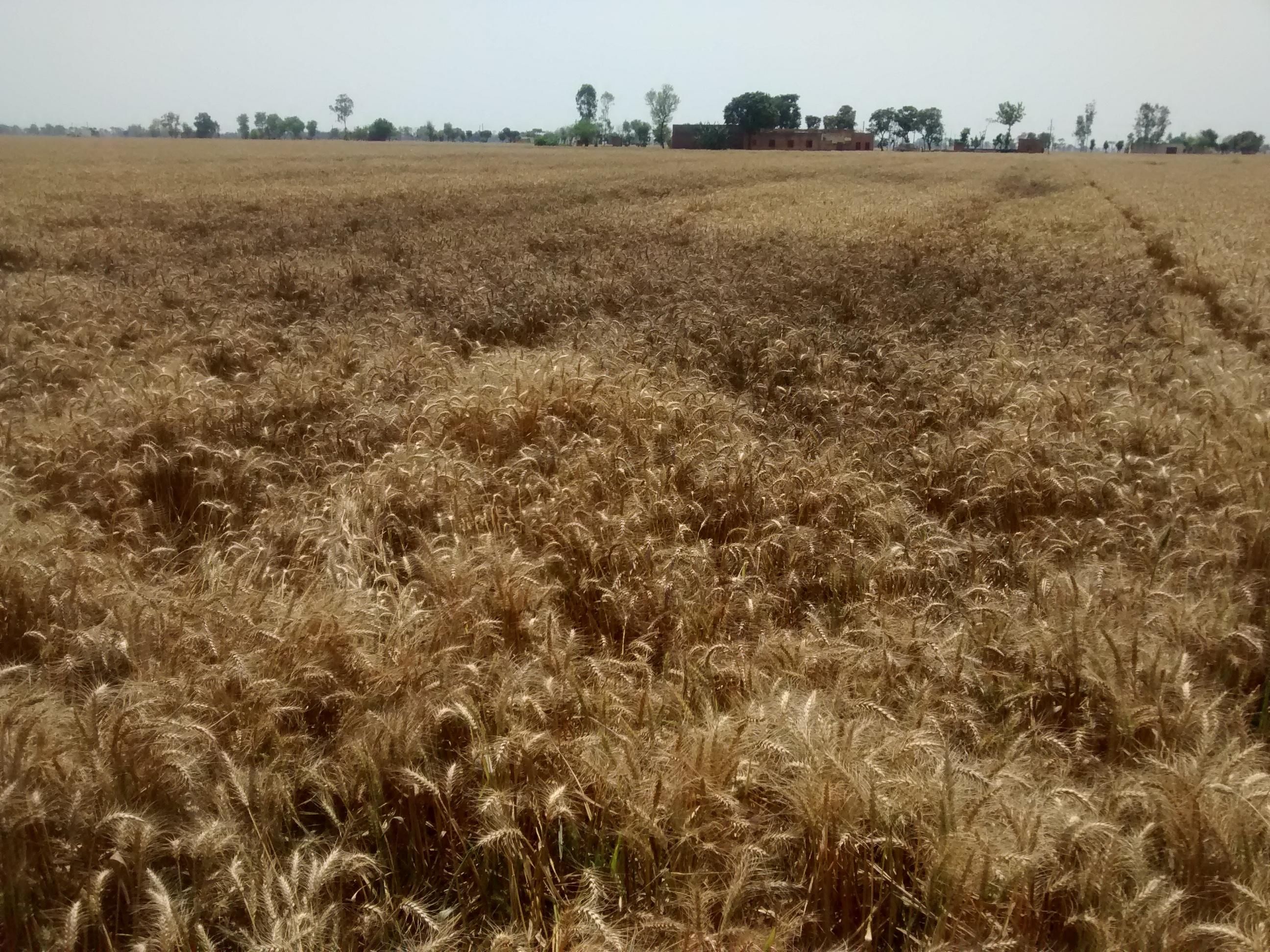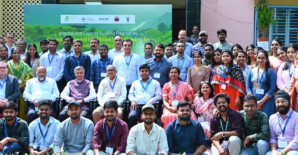
Damaged wheat crop.
Source: Md. Tajuddin Khan/IFPRI
In March 2015, unseasonal rainfall and hailstorms caused tremendous losses to the standing rabi crops right when they were ready to be harvested. The weather anomaly affected 6 million ha of wheat, 1.7 million ha of mustard and 2.6 million ha of horticultural crops. Agriculture in India is vulnerable to a range of weather shocks like droughts, floods, heat waves, cyclones and storms. Short-duration weather episodes like unseasonal rains and hailstorms pose a special challenge for farmers because few coping strategies are available to farmers even if there are reliable forecasts. Unfortunately, climate models suggest that such erratic and extreme weather events are likely to occur more frequently in years to come. Therefore, it is important to identify different ways to mitigate the impact of such weather events on agriculture.
Agronomists suggest that conservation agriculture practices like zero tillage (ZT) make crops less vulnerable to weather shocks in addition to their other benefits like lower production costs and carbon emissions and conservation of soil nutrients and water. This additional benefit of ZT offers an added incentive to farmers to adopt the technology and to governments to promote its adoption. However, there are few empirical studies using data from farmers’ fields (as opposed to experimental plots or farm field experiments) that estimate the extent of loss reduction due to ZT. An IFPRI discussion paper titled ‘Using zero-tillage to ameliorate of wheat yield losses from weather shocks: evidence from panel data in Haryana, India’ tries to fill this gap by rigorously estimating the reduction in loss to wheat crop in Haryana due to zero tillage. Authors, Tajuddin Khan, Avinash Kishore, PK Joshi and Divya Pandey find that crop loss due to unseasonal rains was nearly 25 percent less in the ZT plots than the conventionally tilled ones. Farmers, on an average, suffered yield loss ranging between 3.73 and 4.53 quintals per hectare in 2015 due to unseasonal rains. The loss was lower by 1.05-1.1 quintals/hectare in ZT plots. The adoption of ZT helped in reducing crop loss in wheat by 24-28 percent valued at Rs. 1523-1595/ha (approximately, $ 22.5/ha). The loss avoided due to ZT is nearly equal to the prevailing rental rate of the zero-till machine (Rs. 1500/ha) in Haryana.
Zero-till wheat is one of the most widely adopted resource conserving technologies in the rice-wheat systems in Northern India. In rice-wheat growing areas of Haryana, 36.5 percent of all farmers practice ZT in 35 percent of their wheat area. This IFPRI study provides an additional reason for promoting conservation technologies like ZT and rationalizing insurance premiums for crops. Authors argue that if ZT (or other similar practices) help reduce crop damage due to weather shocks, then the adopters of such practices should pay less premium for crop insurance. Reduced premiums will incentivize the adoption of resource conservation technologies. However, rationalizing premium rates requires reliable estimates of potential loss reduction due to different conservation technologies. We need to replicate these studies across different regions, crops and agricultural practices to design better insurance products and to inform policies on promoting conservation agriculture.



